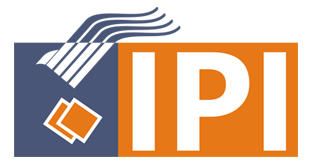Analisis Tenses yang Digunakan dalam Film Kung Fu Panda 3: Relevansi terhadap Kurikulum 2013 untuk Pengajaran Tenses pada Siswa SMP/MTs
(1) Universitas Indraprasta PGRI
(*) Corresponding Author
Abstract
This study aims to find out the tenses used in the film script Kung Fu Panda 3 and its relations between the Curriculum 2013 in tenses learning for junior high school students. The Curriculum 2013 is used as a standard guide to determine the suitability of sentences. This research is descriptive qualitative research using content analysis techniques to analyze the data. Data source Documented film scripts and English Curriculum 2013 for junior high school. The study results are presented in the form of sentences that are analyzed and classified into six types of tenses. The six tenses are in accordance with the Curriculum 2013, namely Simple Present Tense, Simple Past Tense, Present Continuous Tense, Past Continuous Tense, Present Perfect Tense, and Present Future Tense. The study results show a high frequency of relevance to tenses located in film scripts and the Curriculum 2013, with a total of 100%. The results of this study show that the script of the Kung Fu Panda 3 film can be used as a support material for English teachers to teach tenses to junior high school students.
Keywords
Full Text:
PDF (Indonesian)References
M. Behroozi and A. Amoozegar, Challenges to English Language Teachers of Secondary Schools in Iran, Procedia - Soc. Behav. Sci., vol. 136, pp. 203207, Jul. 2014.
Wikipedia, Bahasa Inggris Malaysia. [Online]. Available: https://id.vvikipedla.com/wiki/Malaysian_English. [Accessed: 10-May-2021].
V. Ruusunen, Using Movies in EFL Teaching: The Point of View of Teachers, no. December, 2011.
Kemdikbud, Model Silabus Mata Pelajaran Sekolah Menengah Pertama/Madrasah Tsanawiyah (SMP/MTs), Http://Kemdikbud.Go.Id/, no. 21, pp. 155, 2017.
Teguh Trianton, Film sebagai Media Belajar. Yogyakarta: Graha Ilmu, 2013.
W. Hanafiah, Peningkatan Keterampilan Berbicara Bahasa Inggris Melalui Media Film, Epigram, vol. 16, no. 2, pp. 149158, 2019.
R. H. Kabooha, Using Movies in EFL Classrooms: A Study Conducted at the English Language Institute (ELI), King Abdul-Aziz University., English Lang. Teach., vol. 9, no. 3, pp. 248267, 2016.
P. R. Nath, M. Mohamad, and H. Yamat, The Effects of Movies on the Affective Filter and English Acquisition of Low-Achieving English learners, Creat. Educ., vol. 8, no. 8, p. 1357, 2017.
D. S. Mongar and N. Chalermnirundorn, The Use of Animated Movies to Enhance Narrative Writing Skills of Grade Six Bhutanese ESL Students, Acad. J. Phranakhon Rajabhat Univ., vol. 11, no. 1, pp. 245262, 2020.
F. Iswari and P. Kurniasih, Model Pembelajaran Kooperatif Jigsaw untuk Meningkatkan Hasil Belajar (Tenses) Mahasiswa DKV Unindra, SAP (Susunan Artik. Pendidikan), vol. 4, no. 3, 2020.
IMDb, Kung Fu Panda 3 (2016) - IMDb, 2016. [Online]. Available: https://www.imdb.com/title/tt2267968/. [Accessed: 15-May-2021].
Y. Novi, Moral Values in Kung Fu Panda 3 Movie. STKIP PGRI Sumatera Barat, 2017.
A. M. Nasution, Analisis Nilai Moral dan Nilai Budaya Cina dalam Film Animasi Kungfu Panda 3 Karya Jonathan Aibel dan Glenn Berger, 2019.
A. K. Bhagaskoro, The Representation Hero Of Po As Main Character In Kung Fu 3 Panda Movies (2016). UNIVERSITAS AIRLANGGA, 2020.
S. Susanto, AN ANALYSIS ON INTRINSIC ELEMENTS OF KUNGFU PANDA 3 MOVIE, Journey (Journal English Lang. Pedagog., vol. 2, no. 2, pp. 156164, 2019.
M. P. Prof. Dr. H. Wina Sanjaya, Penelitian Pendidikan: Jenis, Metode, dan Prosedur, Pertama. Jakarta, Indonesia: Kencana, 2015.
S. J. Tracy, Qualitative Research Methods : Collecting Evidence, Crafting Analysis, Communicating Impact. 2020.
W. Sanjaya, Penelitian Pendidikan Jenis, Metode dan Prosedur, Jakarta: Kencana, 2013.
J. Eastwood, Oxford Practice Grammar.pdf, Second edi. New York: Oxford University Press, 1999.
DOI: http://dx.doi.org/10.30998/sap.v6i2.10002
Refbacks
- There are currently no refbacks.
Copyright (c) 2021 agus wilson

This work is licensed under a Creative Commons Attribution-NonCommercial-NoDerivatives 4.0 International License.
SAP (Susunan Artikel Pendidikan) indexed by:






Ciptaan disebarluaskan di bawah Lisensi Creative Commons Atribusi 4.0 Internasional.
View My Statis
Contact Campus A TB. Simatupang, Jl. Nangka Raya No.58C Tanjung Barat, Kec. Jagakarsa - Jakarta Selatan 12530 Telp : (021) 7818718, (021) 78835283 Campus B Jl. Raya Tengah N0.80 Kel. Gedong, Kec. Ps. Rebo - Jakarta Timur 13760 Telp : (021) 87781300, (021) 87797409



 Accredited Certificate
Accredited Certificate
 Tamplate Journal
Tamplate Journal




















